Dubrovnik
![]()
This article is about the city of the same name, for other meanings see Dubrovnik (disambiguation).
Dubrovnik [ˈdubrɔ̞ːʋnik], formerly known as the Republic of Ragusa (Latin Rausium, later Ragusium; Italian and German Ragusa older also Ragus), is a city in southern Croatia on the Adriatic Sea. In 1979, the entire old town was inscribed by UNESCO on the World Heritage List.
Dubrovnik is today the administrative seat of Dubrovnik-Neretva County (Croatian Dubrovačko-neretvanska županija) and the seat of the Catholic Diocese of Dubrovnik. The city had 42,615 inhabitants at the 2011 census. Ethnic Croats make up the majority of the population, 90.34%. There are also some Serbs and Montenegrins, Bosniaks, Albanians, and a small Jewish community. The city of Dubrovnik was one of the centers in the history of the development of the Croatian language and literature. Numerous important Croatian poets, artists, scholars, mathematicians and physicists came from this city. Nowadays Dubrovnik can also be called a cultural centre of Croatia.
For centuries, Dubrovnik was an independent city republic that maintained trade relations with large parts of southeastern Europe and with the Mediterranean. Next to the name of the city, the motto "Libertas" (Latin for freedom) is still emphasized. Today, this phrase is found, among other things, in the motto of the Dubrovnik Festival Weeks of Music and Theatre. Famous is also the legendary saying when the Ottomans wanted to take the city, which testifies to a distinct and forward-looking understanding of freedom of the inhabitants. The Dubrovniks (Croat. Dubrovčani) professed the words of their poet Ivan Gundulić: "Non bene pro toto libertas venditur auro" (German: "For all the gold in this world we will not sell our freedom.").
History
For the history of the city republic, see also the main article Republic of Ragusa.
Ancient
The Croatian name of the town is derived from the Slavic word dubrava (oak grove); the Romanesque name Ragusa/Rausa comes from the name of the small island on which the first settlement (Lave, Lausa) was built.
New archaeological finds prove that an Illyrian settlement existed on the rock, which was called Ragusa in antiquity, in the 3rd century BC. With the reorganization of the Roman Empire and especially of the ecclesiastical-administrative relations in the middle of the 6th century, the rock was fortified around 550/560 under Justinian I, and a basilica of larger dimensions (31 m × 18 m), intended as a bishop's seat, was built on the site of the present cathedral. But already during the Gothic Wars of 533/534 Ragusa seems to have played a role in Belisar's operations. At the beginning of the 7th century at the earliest, as a result of the Slavic invasions, the inhabitants of the destroyed Epidaurum (today's Cavtat) moved to the fortified island.
Medieval
Emperor Constantine VII Porphyrogennetos (905-959, r. 945-959), in his work De Administrando Imperio, describes all the peoples of the Empire, as well as those bordering the Empire, their origins and the history of the cities in this area. According to Porphyrogennetos, the oldest name of Dubrovnik was Lausion, which is said to have been derived from a Greek word for steep. In the course of time, the L changed into an R, from which the name Rausion was formed, and later again Ragusium. The following variants are also known: Rausium, Racusium, Rausa, Ragusa, Racusa. In the papal bull of Pope Benedict VIII, transmitted to the Archbishop of Dubrovnik in 1022, the name Labusedi is found, derived from the Latin word labes, in German Sturz. From the Greek, therefore, come the terms Lausion and Rausion, and from the Latin the terms Labusa and Labusedi.
After the Slavs had driven out the population of Epidaurum, they settled in that city. They also founded a settlement on the mainland at the foot of Mount Sergius opposite the island to which the Roman population had fled, on a piece of land covered by a dense oak forest. Since the oak was called dub in Slavic, the name Dubrovnik was most likely formed from it.
Over time, friendly relations developed between the island settlement and the Slavic population on the mainland. In the 12th century, the channel between the mainland and the island was filled in, causing the two settlements to grow together. Today, the famous main street of Dubrovnik, the Stradun (the Placa is the filled-in inlet that separated the island from the mainland), is located at this point. Later, the centre of the united city developed at this junction. The archbishopric of Ragusa was founded in 980.
Dubrovnik was under the protection of Byzantium since its foundation (a Byzantine strategist resided here for some time). At the turn of the 12th and 13th centuries Dubrovnik was allied with the Bosnian Ban Kulin. Bosnia became an important supplier of raw materials to the city (wood and metals). At the same time, important trade routes to the interior of Southeastern Europe ran through Bosnia. At the time of the Crusades, the city was temporarily under the rule of Venice (1205-1358). In 1242 the city was besieged by the Mongols and the surrounding countryside was devastated. In 1240 and 1244 the alliance with Bosnia was renewed.
After the peace treaty of Zadar in 1358, Dubrovnik recognized the suzerainty of the Croatian-Hungarian kings and paid tribute to them until their defeat at Mohács in 1526. However, as early as 1420, delegations regularly traveled to the Ottomans, who, in addition to affirming their neutrality, delivered annual tributes, most recently 12,500 ducats, paid until the Peace of Passarowitz in 1718.
After gaining its autonomy (only dues in the form of taxes and ships were paid to the Hungarian-Croatian king), Dubrovnik began its life as an independent republic of Ragusa. The republic managed to maintain its autonomy and the citizens of the city elected their city council and senate.
The patron saint of the city was St. Blasius (in Dubrovnik: sveti Vlaho; otherwise Croatian: sv. Blaž), a doctor from the time of Diocletian, who, according to tradition, saved Dubrovnik during an attack by the Republic of Venice.
In 1416, the Republic of Ragusa was the first city-state in Europe to abolish slavery; at the same time, the slave trade was prohibited by law.
Ottoman period
In the 15th and 16th centuries Dubrovnik experienced its greatest economic boom through profitable trade with the Ottomans in the hinterland and the coastal cities of the Mediterranean.
Dubrovnik's merchant fleet consisted of 160 ships in the 16th century and was one of the largest in the Mediterranean at that time. The most important protecting power of the Republic of Dubrovnik was the Kingdom of Spain, the greatest threat to Dubrovnik's independence and freedom was Venice. With the Peace of Passarowitz in 1718, the Ottomans were granted access to the Adriatic Sea between Neum and Klek. Today, this part of the coast is part of the federal state of Bosnia and Herzegovina and the reason that Dubrovnik is an exclave.
The crisis of the Mediterranean shipping and especially the catastrophic earthquake of 1667 led to a serious crisis from which the city republic never really recovered.
Dubrovnik was the first state in the world to internationally recognize the independence of the United States of America in 1776. In the 18th century, Dubrovnik was home to over 85 consulates.
Recent history from 1800
In 1806 French soldiers under Napoleon Bonaparte occupied the city, and in 1808 Marshal Marmont proclaimed the abolition of the Republic. Dubrovnik belonged to the Illyrian provinces of Napoleonic France from 1809 as part of the department of Raguse. Military governor with the title of Duke of Ragusa became Marshal Marmont.
After the Congress of Vienna, it fell to the Empire of Austria and became part of the crown land of Dalmatia. During the imperial reform to the dual monarchy of Austria-Hungary in 1867, Ragusa remained with Dalmatia in the Cisleithanian half of the empire. Ragusa became the seat of the district governorship of the district of the same name. The Brockhaus of 1886 describes the city as resembling a fortress, yet fairly well built and, though narrow and uneven, yet very clean. Industry is limited to some silk and leather and a few liqueur factories, as well as excellent cooking oil. Three times a week a Turkish caravan comes to the bazaar there.
Even during the Habsburg rule, tourism began to develop at the beginning of the 20th century, a tram line to the New Harbour was built, which existed until 1970, and the brother of Emperor Franz Joseph, Archduke Ferdinand Maximilian of Austria had a summer residence built on the island of Lokrum (Italian: Lacroma), which lies in front of the city.
From 1918
From 1918 to 1941 Dubrovnik belonged to the "first" Yugoslavia. Tourism continued to develop, initially on a more exclusive basis. Luxury villas were built, such as the orientalizing Villa Šeherezada of the Estonian-American hotel and casino millionaire William D. Zimdin east of the old town, which still exists today. In 1939, as part of the restructuring of the country's internal borders, Dubrovnik became part of the Banovina Hrvatska (Croatia) due to historical reasons and its majority Croatian population. During the Second World War, the city became part of the so-called Independent State of Croatia under Ante Pavelić.
After 1945, Dubrovnik remained part of the Croatian Republic in the second Yugoslavia. In 1956, Dubrovnik hosted a significant event in architectural history: the 10th (and penultimate) in the series of CIAM (Congrès Internationaux d'Architecture Moderne) congresses. The city became one of the most important destinations for Adriatic tourism in the post-World War II period.
During the Croatian war, the town, a World Heritage Site, was besieged and shelled by Serbian-Montenegrin forces. According to the Croatian Red Cross, a total of 114 civilians lost their lives. The material damage has now been almost completely repaired and the town is once again considered the most popular holiday destination in the region.
See also: Siege of Dubrovnik
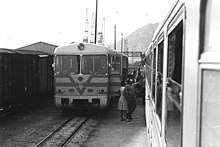
Dubrovnik was connected to the hinterland by a narrow-gauge railway.
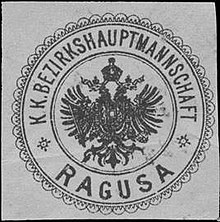
Ragusa district administration - seal stamp
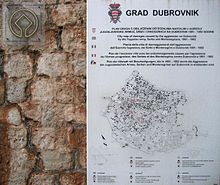
Information board in Dubrovnik: Plan of the old town with damages caused by the attacks of the Yugoslavian army and Serbian-Montenegrin troops on the old town of Dubrovnik in 1991 and 1992.
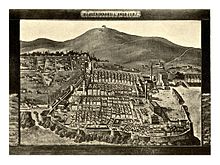
Ragusa before the earthquake of 1667, heliography Kowalczyk 1909

The old town from above
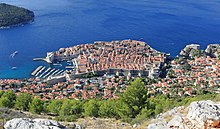
View of the Old Town from Dubrovnik's local mountain Srđ

Dubrovnik, view from the sea
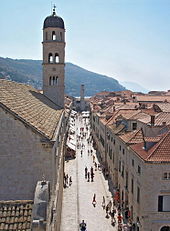
The Stradun, the main street of Dubrovnik

Café in the old town of Dubrovnik
.JPG)
View of the old town of Dubrovnik
Politics
City flag
The flag shows the town patron St. Blasius with a model of the old town centre and a staff in his left hand. The right hand is raised for an oath. The clothing is in the Slovak national colours of red, blue, yellow and white. - The patron saint is also carved as a sculpture above the southern town gate in a niche.
Coat of arms
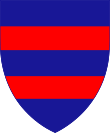
In the triangular escutcheon, two horizontal red bars are depicted in dark blue. It is a part of the crown of the coat of arms of Croatia.
World Mayor
In 2006, the World Mayor project awarded the city of Dubrovnik and its mayor Dubravka Šuica eighth place in the ranking of mayors in the world. The ranking was determined by internet voting. This project aims to highlight the importance of the mayor's office.
Questions and Answers
Q: What is the name of the city in Croatia?
A: The name of the city in Croatia is Dubrovnik.
Q: What was the city called more than 500 years ago?
A: More than 500 years ago, the city was called "Ragusa".
Q: What is the Italian name for this city?
A: The Italian name for this city is still "Ragusa".
Q: Where is Dubrovnik located?
A: Dubrovnik is located on the Adriatic Sea.
Q: How many people lived there in 2001?
A: In 2001, about 50,000 people lived there.
Q: Why has Dubrovnik been declared a UNESCO World Heritage Site?
A: Because of its age and unique buildings, Dubrovnik has been declared a UNESCO World Heritage Site.
Search within the encyclopedia